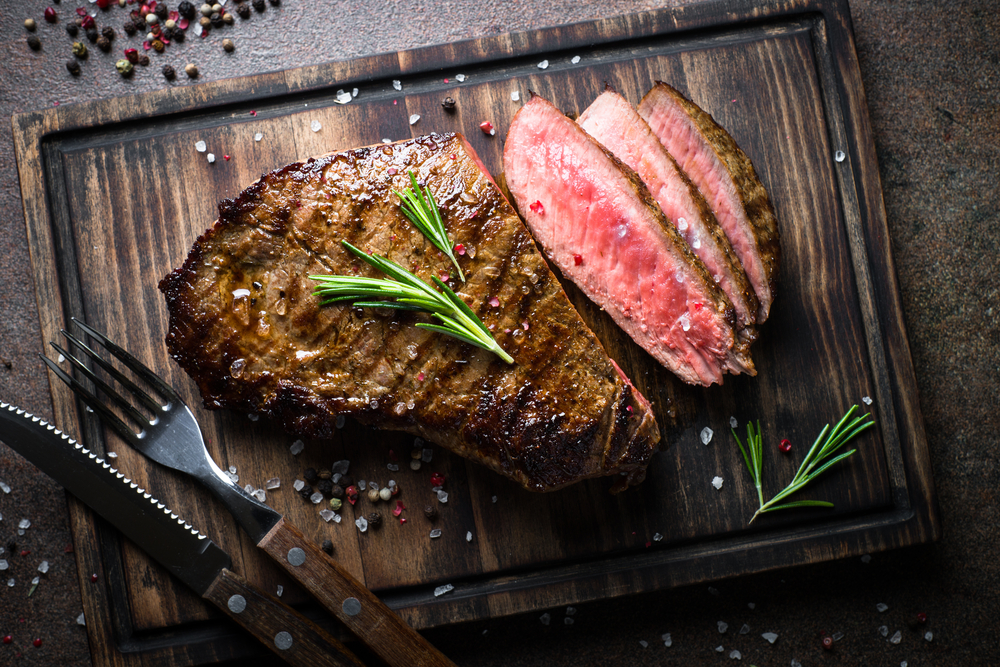Chicken is seen as staple meat in so many households. Even so, this extremely healthy and delicious source of protein is one of the biggest risks of bacterial contamination. That’s why preparing, storing and cooking it the right way is so important.
Because otherwise, it would be a constant source of illnesses and infections. Storing chicken in your fridge is convenient, but it shouldn’t stay too long there. In fact, many people still don’t know how long they can safely refrigerate chicken. This article will show you how long can chicken last in your fridge, and other types of meat that you might have there.

How Long Should You Keep Chicken in the Fridge?
According to the United States Department of Agriculture (USDA), raw chicken can stay in the fridge for approximately 1-2 days. The same goes for raw turkey and other types of poultry. In the meantime, cooked chicken can last in the refrigerator for as many as 4 days.
It is true that storing chicken in the fridge will slow down bacterial growth, as bacteria tend to grow much slower in temperatures below 40°F. Even more, raw chicken is best if it’s stored in a leak-proof container, so the juices won’t leak and contaminate other foods.
You should try and make a habit of refrigerating cooked chicken in an airtight container. If you want to store the chicken for longer than a couple of days, the best thing would be to store it in your freezer.
Raw chicken pieces will resist in the freezer for up to 9 months, and a whole chicken can be frozen up for an entire year. Cooked chicken can be stored in the freezer for between 2 to 6 months.
Signs your chicken has gone bad
If you know you left the chicken in the fridge for more than just a couple of days, there is a big chance it has already gone bad. Here’s a list of signs to tell if the chicken in your fridge has gone bad or not:
- It is past the “best by” date – Chicken, whether raw or cooked, that has passed its “best if used by/before” date has already gone bad
- Changed color – Raw and cooked chicken that turned gray-green has gone bad. Spots of gray and green mold actually indicate bacterial growth
- Smell – Both raw and cooked chicken has an acidic smell that resembles ammonia when it goes bad. Even so, this scent can be difficult to notice, especially if the chicken has been marinated with various sauces, herbs, and spices
- Texture – Chicken that has a slimy texture has definitely gone bad. Rinsing the chicken won’t destroy bacteria. In fact, if you do this, it can actually spread the bacteria from poultry to other foods, and even surfaces, causing cross-contamination.
Risk of eating spoiled chicken
Eating spoiled chicken might cause foodborne illness, which is commonly known as food poisoning. Chicken has a much higher risk of causing food poisoning, because it may be contaminated with bacteria such as Campylobacter, Salmonella, and many others.
Usually, these bacteria should disappear when you cook fresh chicken thoroughly. Even so, you still have to avoid cooking and eating spoiled chicken. Even if re-heating or cooking might kill surface bacteria, it won’t fully eliminate other toxins produced by the bacteria.
Food poisoning comes with some of the most dangerous symptoms, like high fever, chills, nausea, vomiting, diarrhea, bloody stools, and even dehydration.

How to tell if the veal has gone bad
If it’s been in your refrigerator for too long, then it has gone bad. According to USDA, any ground meat should be used for a maximum of two days after the purchase, and cuts of beef within three-to-five days.
Trust me, the last thing you want is to wait until it smells or even shows signs of spoilage to get rid of it. You want to stick to the recommended storage times. There’s no limit to how long can meat remain in the freezer, where it’s, in theory, way too cold for bacteria to develop.
However, meat that has been frozen for a long time has to dry out. Magoulas recommends keeping steaks for no longer than 6 to 12 months if you want to have the best quality.
Also, if the smell is a bit “off”, and the meat is sticky, slimy, and even tacky, then you need to throw it out as fast as you can. If you simply leave the ground beef in the refrigerator, it will start to spoil only after a couple of days. Plus, when it comes to meats if they’re sticky, slimy, and smell bad, then it’s not edible.
What does a gray color mean when it comes to beef?
In some cases, beef can develop a brown color, because of its metmyoglobin, a chemical reaction that takes place when the myoglobin in meat is exposed to oxygen. Freezing meat might also change its appearance.
If you only notice a change in color, without other signs of spoilage, then it doesn’t mean that the meat has gone bad. In reality, it’s not so unusual to notice that color, as it can change at times. Plus, freezing meat might also be responsible for changing its appearance. If it doesn’t smell a certain way or has stickiness all over it, then it’s good to go.

How to tell if the pork meat has gone bad?
Being extremely strict about expiration dates will help you keep your pork the way it’s supposed to be kept before it goes bad. You should also visually evaluate the meat before starting to cook it. What’s the texture like? If it has a slimy or sticky texture, then it has turned bad.
A grayish color also means that the pork is no longer good for cooking (or eating, for that matter). The yellowish or greenish color is even WORSE. That’s a clear sign you need to throw it out right away, even clean in the place where you kept it.
A healthy chunk of pork should have a pinkish hue, with white fat marbling. But you can also use your nose because any sour or ammonia smells are a definite sign your pork has spoiled and should be immediately discarded.
How to store your meat:
As Food and Drug Administration explained, it is very important to cook pork to an internal temperature of a minimum of 145 degrees Fahrenheit, with a three-minute resting before eating it, so you can avoid issues that might arrive from undercooked meat.
When it comes to pork, some of these issues include trichinosis and salmonella poisoning. The FDA recommends keeping your refrigerator at 40 degrees or even colder if you want to avoid any chance of bacterial contamination during storage.
As Recipe Tips showed, pork can be refrigerated for about four days. After four days, it’s no longer safe to eat it. If you know you won’t cook it in this amount of time, simply freeze it. Pork can be easily frozen for 4 to 12 months, depending on the part.
For example, pork chops can be frozen for six months, according to FDA. All you have to do is to make sure pork is wrapped the right way before freezing, with an airtight seal (here are the best freezer bags you could ever ask for). Also, remember to write down the date of freezing, so you won’t forget.
If you enjoyed reading this article, we also recommend reading: Do You Have High Cholesterol? Here Are 4 Dinner Recipes You Should Try







